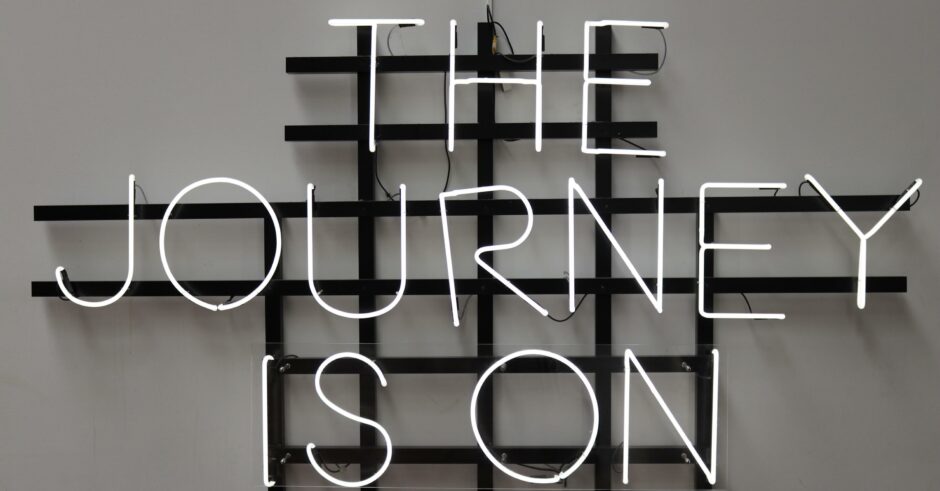Being able to successfully establish and execute transformation and change programmes is a key element in enabling you to achieve strategic goals and work towards realising the corporate vision. It is a journey and, as with all journeys, there’s a start point, a route / roadmap, and a destination.
The Journey
The below simply illustrates the various components involved and how they fit together. ‘Strategy’ components (what you want to achieve) are coloured orange, ‘operational’ components (what you are actually doing), blue.

The destination is encapsulated by the corporate vision which is a simple, very high level statement of where an organisation wants to get to, and what it ultimately wants to achieve.
The Mission Statement is a general statement of how an organisation will achieve its vision by stating at a high level what it does, who it serves and how it serves them. The Mission Statement may be modified over time, but it should always stay true to the company vision and values.
The Core Values are the beliefs and principles that define how an organisation and its leaders will behave when carrying out the activities of the organisation.
The vision and mission should be defined before initiating any strategic activity, as the objective of the strategy is to try to achieve the company’s mission and realise its vision. The company strategy will include short- and long-term goals.
An organisation needs to establish an operating state that enables its strategic goals to be achieved. This is defined by the Target Operating Model (TOM).
The strategic change roadmap is defined as the gap between the Current Operating Model (COM) and the Target Operating Model. This will typically include various transformation programmes which will, if successfully delivered, enable realisation of the operational state that allows strategic goals to be achieved.
The start point is defined by the Current Operating Model. This describes, at an appropriate level, how an organisation functions, how it is structured, what capabilities exist within that structure, and how those capabilities interact with other and work together.
The Change Function
The roadmap will consist initially of ideas, concepts and proposals that will need to be further defined, proven and validated. This is where an organisation’s change function enters the picture as it is that capability which will undertake the change activity, from business case development to programme delivery.
Referring to the illustration below, all the items listed in the ‘Change Capability’ box need to be in place and working efficiently and coherently together for a change function to be effective, to minimise delivery risk and maximise the potential for programme success.
If the initiatives and programmes defined by the roadmap are successfully delivered, the COM will be redefined (COM*) and the organisation will have achieved some of its strategic goals and be closer to its desired TOM.






